TOM BIHN Daylight Backpack Review
Tom Bihn’s Daylight Backpack features an ingenious organization in lieu of a back panel to minimize weight, though we think it could be refined.
Our Verdict
Save time. Get access to brief summaries of our reviews so you can browse and make decisions more efficiently.
Pros
- Fairly light for a non-packable backpack
- Surprisingly spacious for a sub-20-liter backpack
- Sternum and waist strap are nice inclusions if a bit overkill
Cons
- No false bottom or padding for laptops
- A packed out main compartment may rob space from the front pocket
- We think the makeshift back panel solution could use refinement
Technical Details
-
Capacity
16.5l
-
Weight (oz)
15.4 oz (436.6 g)
525D Ballistic | 12.3 oz - 400D Halcyon
-
Denier
525D
Ballistic | 400D Halcyon
-
Dimensions
11.8 in x 17.3 in x 5.1 in (30 x 43.9 x 13 cm)
-
Notable Materials
Duraflex Hardware, ITW Hardware, Woojin Hardware, Ballistic Nylon, Ripstop, YKK Zippers
-
Manufacturing Country
United States
-
Laptop Compartment Size
13"
-
Warranty Information
Full Review
Tom Bihn is one of the few brands that are very transparent with their thought process. Check out any of their bag’s product pages, and you’re greeted by a short story explaining why it exists and what its goals are. You get a sense that each product is carefully thought of and not randomly cobbled together.

In this review, we take a look at the Daylight Backpack. The goal for this backpack? To be a minimalist backpack that’s light and utilitarian. To achieve that goal, Tom Bihn decided to go for an unusual pocket layout inside the main compartment that’s meant to act as a makeshift back panel. If you’re as confused as we were when we first heard about this, then you’re in luck. We’ve done the testing so you don’t have to, so let’s find out if this scheme works.
Materials & Aesthetic
Our sample here is the Ursa 525 Ballistic/Island 210 variant, which is Tom Bihn-speak for brown on the outside and blue on the inside. Combined with the Daylight’s tall rectangular shape, the bag begins to more or less resemble a chocolate bar. Admittedly, we weren’t immediately charmed by the brown color and boxy profile. It felt a bit too mundane at first, but it’s grown on us over time.

The keen-eyed among you may look at the Daylight and see a bigger version of the Zeitgeist. We agree the resemblance is there, primarily because of the diagonal zippered opening of the front pocket. It almost makes us wish that the Daylight also featured the more vintage style logo the Zeitgeist touts.
In case you’re not a fan of the brown and blue combo, there are a lot of other colorways available as well. We’re not going to list all of them, but some of the more eye-catching ones (at least to our eyes) are Mars Red 525 Ballistic/Cloud 210 Ballistic (red and gray), Aubergine 525 Ballistic/Cloud 210 Ballistic (violet and gray), and Taiga 400 Halcyon/Northwest Sky 200 Halcyon (grid-patterned olive and gray).
The Daylight keeps its shape rather well, too. The 525-denier ballistic nylon fabric isn’t exactly the heaviest weave of fabric out there, but it’s good enough to maintain the bag’s structure. Oftentimes, we see a bag with great aesthetics, only to be let down by a structure that collapses as soon as it meets real-world usage, so we’re glad that’s not the case with the Daylight.
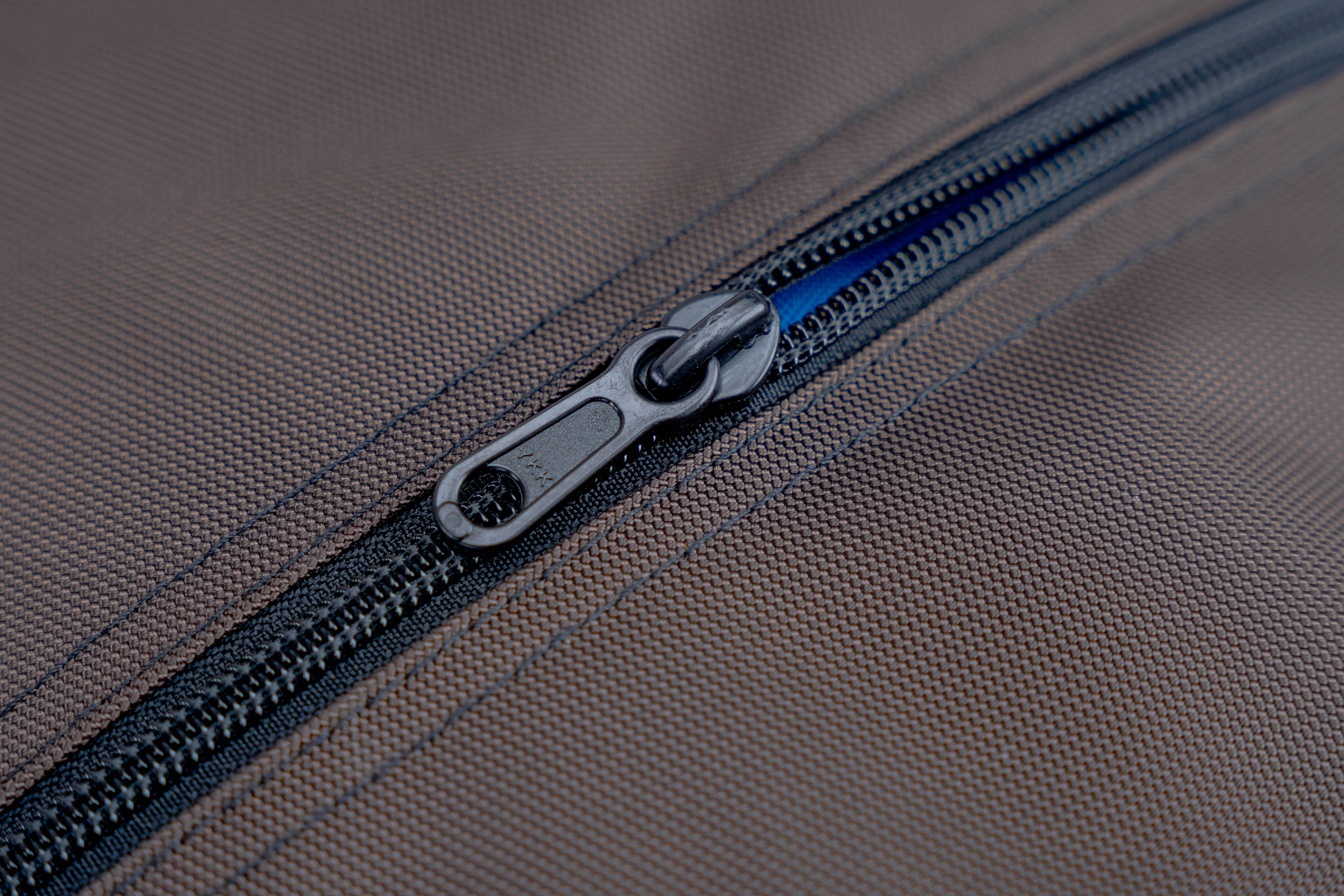
While the 210-denier liner is lighter than the fabric outside, it does help keep the interior bright and visible even under poor lighting conditions. It’s interesting to note that while the Daylight is designed with lightness in mind, Tom Bihn didn’t skip having liner fabric, a decision we can stand behind.
Lastly, there’s the hardware. It’s the usual all-star cast that the brand uses: YKK zippers and a mix of Woojin and Duraflex buckles, clips, and adjusters. These are brands whose hardware generally doesn’t fail or rarely does. In the case of the Daylight, everything works smoothly as intended, and none of them broke throughout our initial testing.
External Components
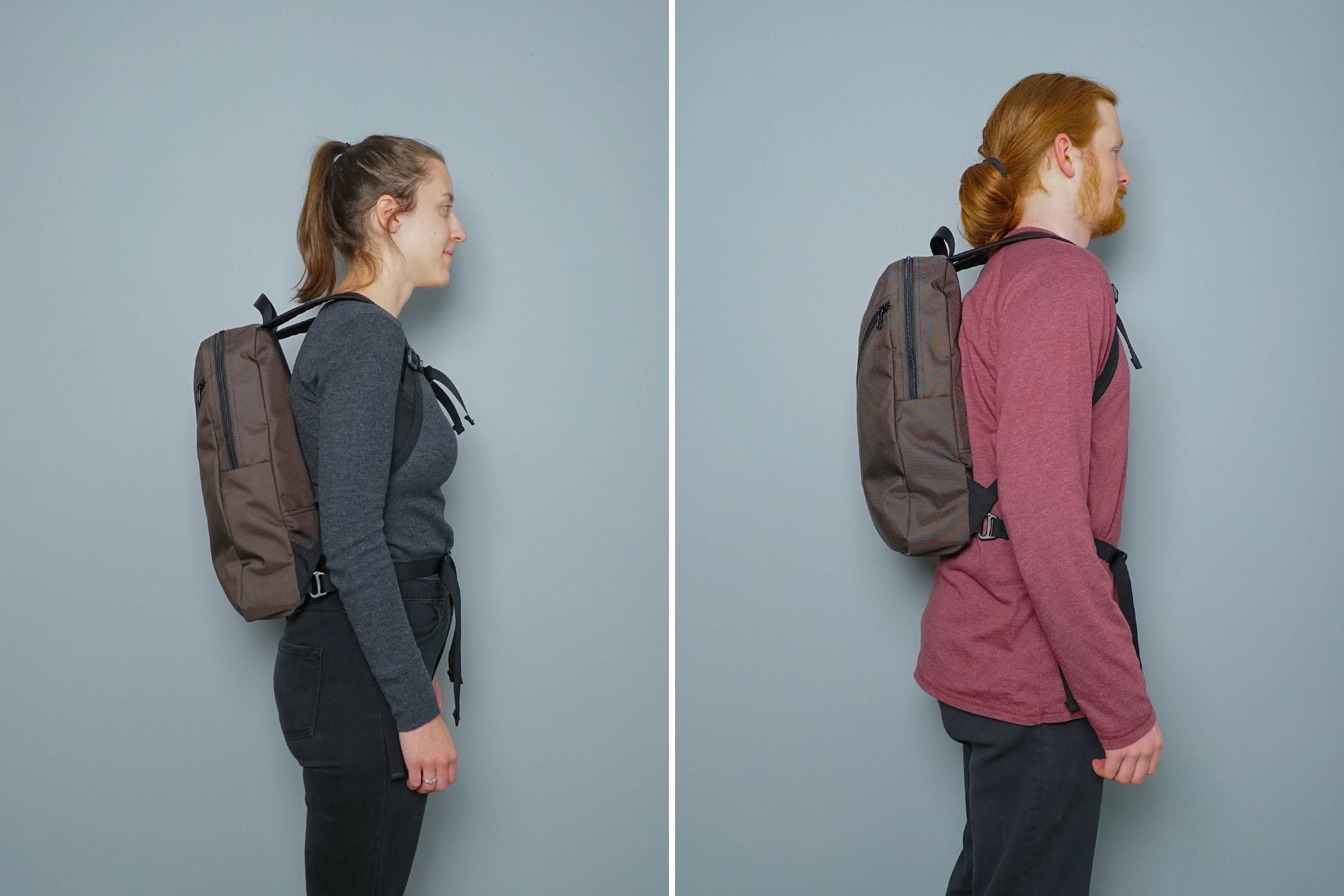
When we first heard of the Daylight, we weren’t super stoked about the shoulder straps. Initially, Tom Bihn went for a thin seatbelt-like material design that was sufficiently wide but lacked any appreciable padding. This makes sense since one of their main goals for the Daylight was to make it as light as possible. That’s not to say straps like that can’t work. In fact, we see them every day in slings and some smaller backpacks like the VANQUEST CARBIDE-12.

That’s a 12-liter backpack, though, and the Daylight is 16.5 liters. We can’t know for sure how the Daylight would have carried with the original strap design. What we do know is that the revised design feels super comfortable. They’re well-padded, contoured, and very supportive. We’re glad Tom Bihn went for the safer option and opted to use padded shoulder straps. Still, we can’t help but wonder how well the original design carried.
You also get a sternum strap for good measure. It’s our favorite kind, too: the kind that slides along straps and, therefore, has very granular adjustability. There are no fancy magnetic buckles here either; just a good old-fashioned side release buckle that’s easy to clip and unclip. No strap keepers, though, so the extra slack just dangles around.
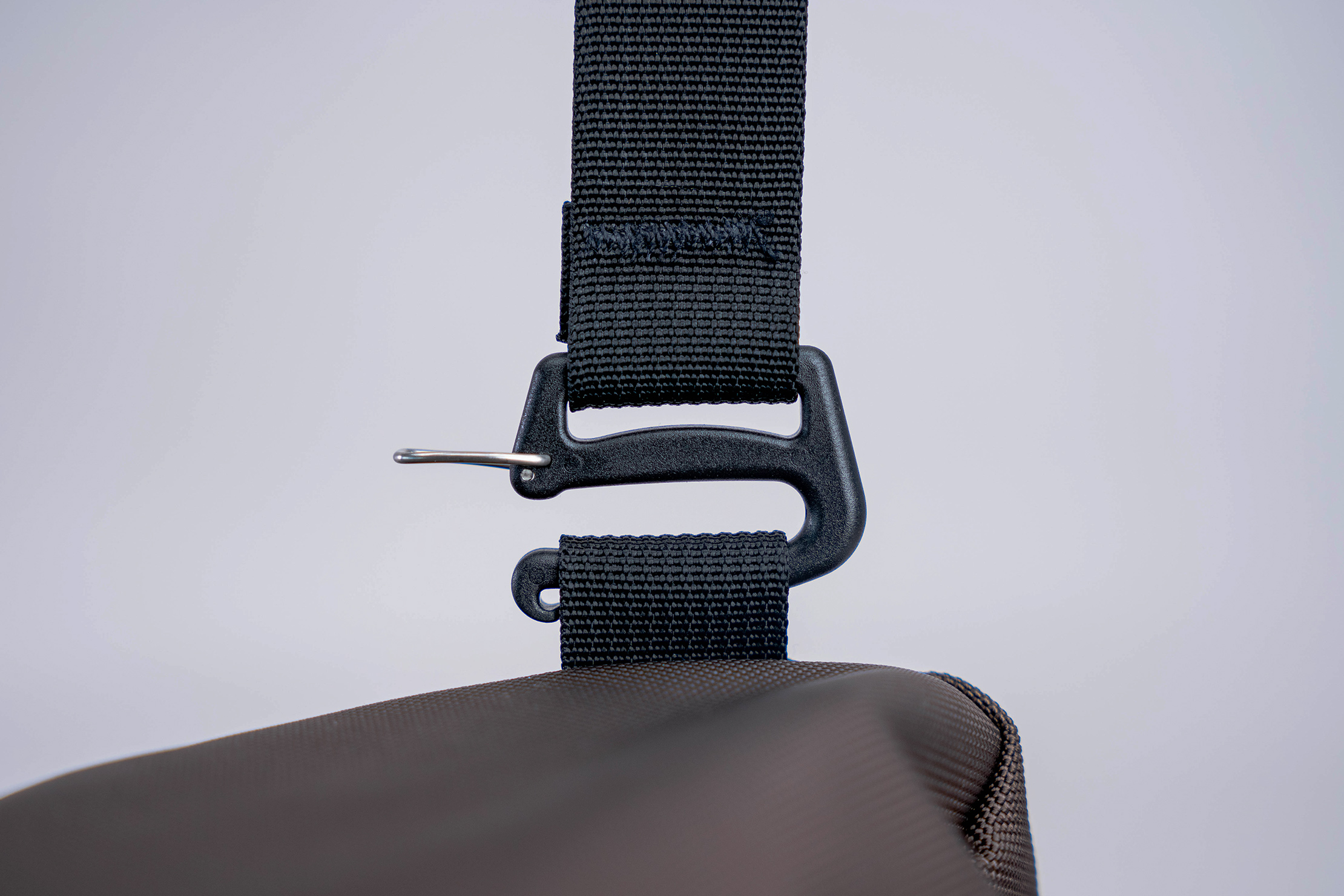
If that’s not enough, there’s also a removable waist strap near the bottom. They’re detachable by undoing their respective gatekeeper clips. As with most backpacks around this size range, waist straps aren’t really necessary. The only time we use waist straps on daypacks is whenever we’re doing something jostle-y like bike rides. Even the sternum strap isn’t strictly necessary, and we found ourselves leaving it at home most of the time as well.
Overall, carrying comfort is excellent for a daypack. The shoulder straps are just small enough that they don’t scrape the neck area. At the same time, they’re not too small that they dig into our shoulders. And, in case you need the extra support, it’s nice to have the optional sternum and waist strap included.

If there’s anything notably missing from the Daylight, it’s a dedicated water bottle pocket. This may be a deal-breaker for those who want easy access to their bottle. Fortunately, there is ample space inside the main compartment to fit a bottle in addition to other gear.
Inside The Backpack
The front pocket features a diagonal-style opening. At first, this may seem completely superficial and just part of the Daylight’s styling, but it does have practical meaning. It’s a sort of compromise between having a tall front pocket while still making its deeper area accessible. And believe us, it’s a very deep pocket.
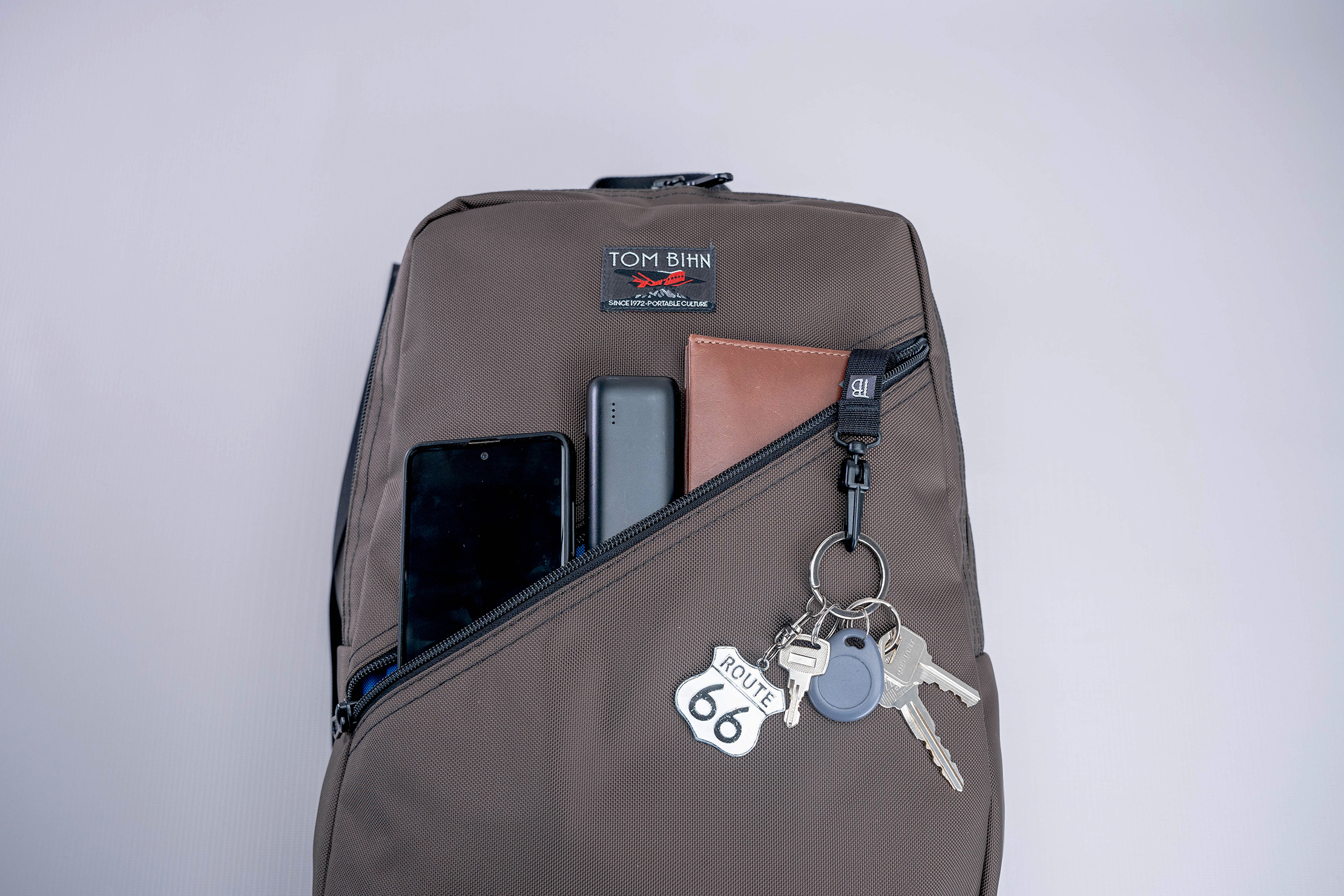
Just the lower portion alone is more than enough to swallow our usual everyday carry items, namely our wallet, smartphone, and even a large power bank. There are no additional pockets of any sort inside, so it’s basically a huge dump pocket. You’ll have to rely on smaller pouches if you want to get organized.
In case you want to fit tall gear like a folding umbrella, there’s a ton of headroom above to accommodate.
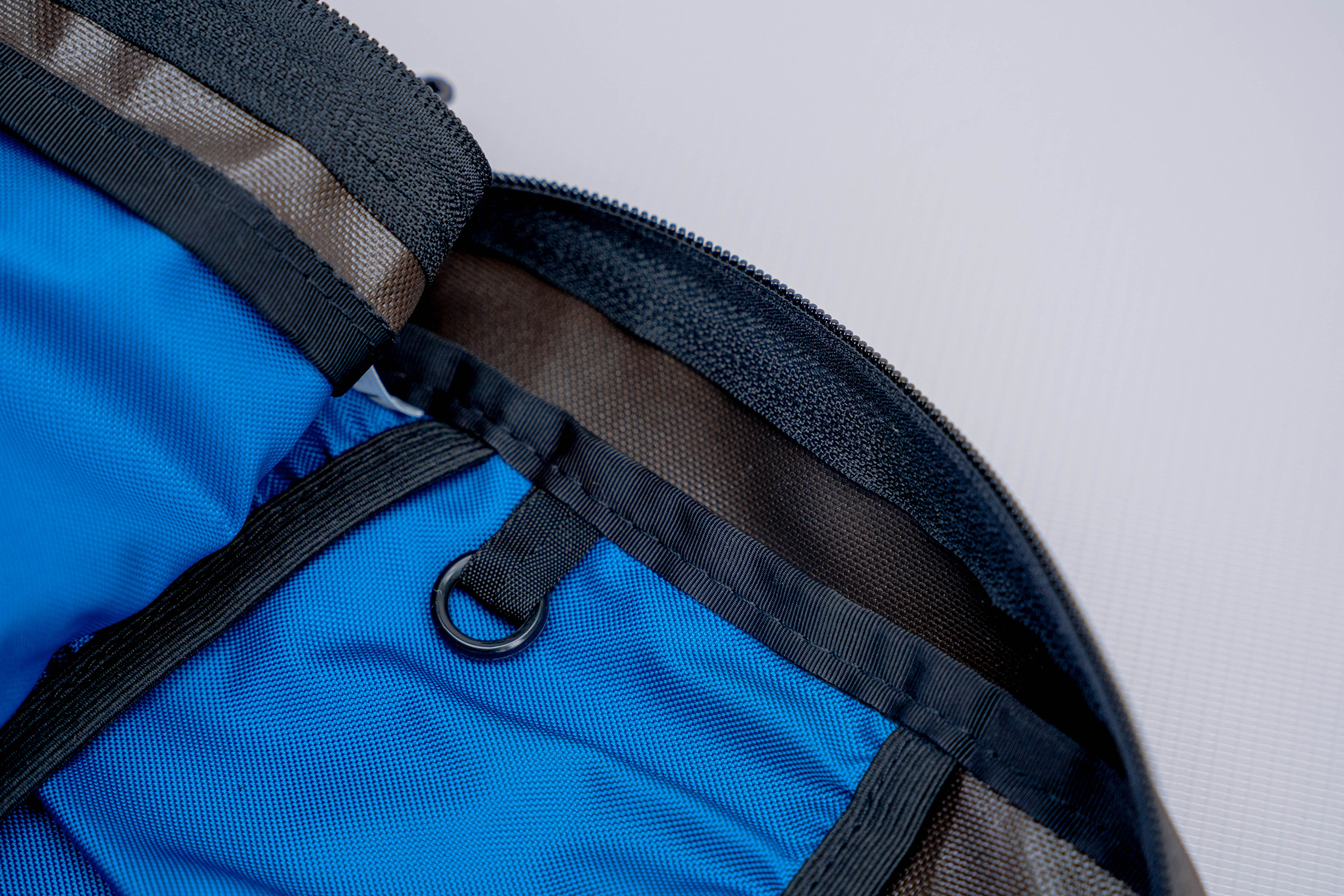
While there are no additional pockets inside, there are two built-in O-rings. They’re located symmetrically opposed to each other, one near the left side of the opening and one near the right. These O-rings are a staple feature of Tom Bihn’s gear, one that we like because of the flexibility they offer.
Case in point: the right O-ring here is where the included key leash is attached by default. If we ever decide that that’s not a secure place for our keys, we can always move to another O-ring, maybe to one inside the main compartment.
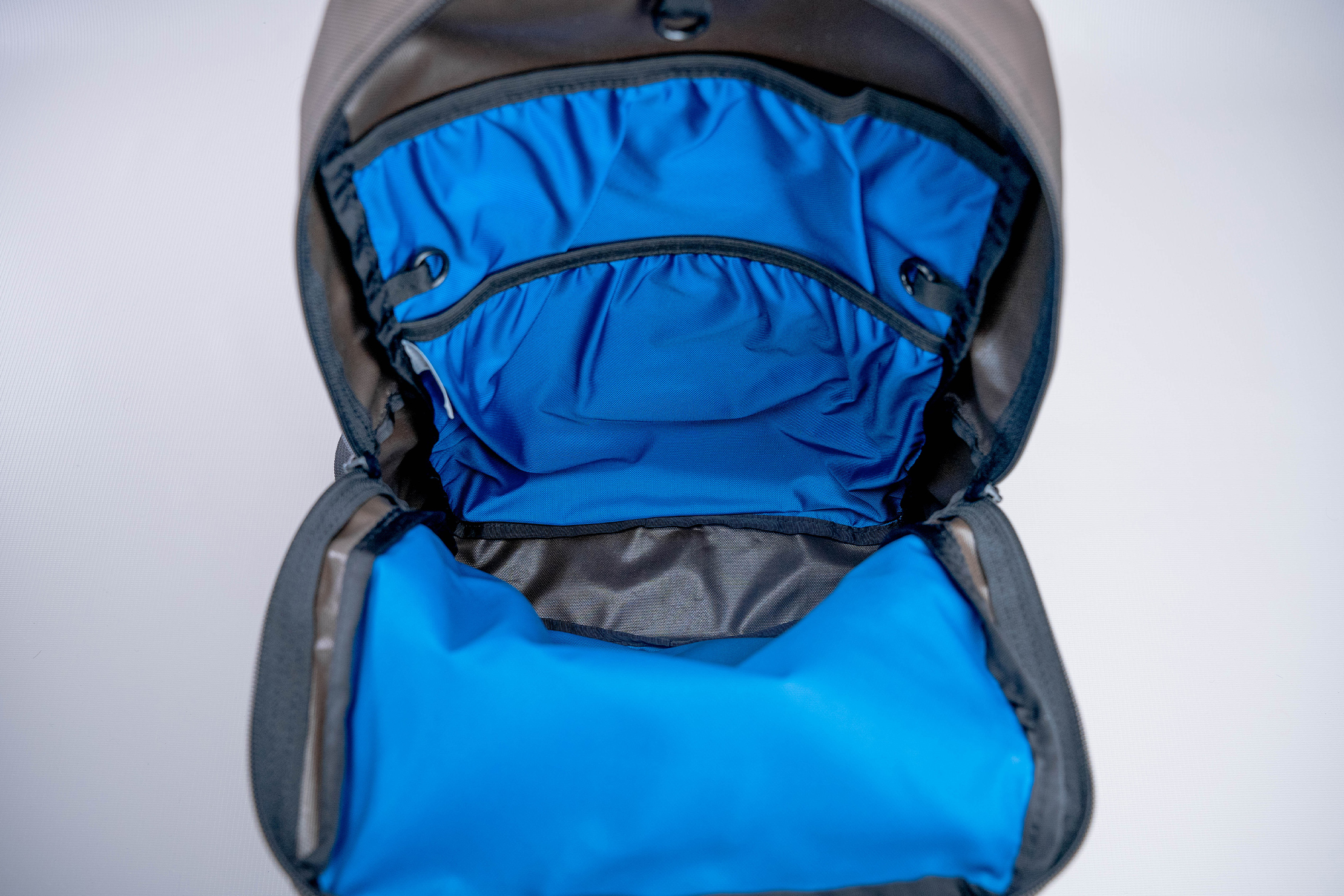
Moving on to the main compartment, the opening is the typical horseshoe style. This is a tall backpack, in case we haven’t already mentioned, so, fortunately, the zippers do go sufficiently far down along the sides.
Inside the compartment, you get more O-rings: one at the top and two at the side. There’s also a rather interesting organization layout going on. Instead of the usual laptop sleeve at the back, there are two pouch-style liner pockets stacked on top of each other. Interestingly, there’s some overlap between them as well. So, why the unusual setup?

Tom Bihn’s rationale is that since they didn’t want to add heft and bulk by having a back panel, they instead have these two pockets. The idea is that users would add their own soft gear that acts as a makeshift back panel. For example, that would mean clothing in one pouch, puffer jackets in the other It sounds ingenious, but does it work in practice?
For the most part, it does, and we could see and feel what they were going for. However, there is a noticeable gap between the two pouches, which our clothing did not fill. It’s not uncomfortable, but once we noticed it, it was hard not to notice it.

We do appreciate the attempt and amount of thought put into the design. Tom Bihn even goes into detail about how they initially thought of having just one pocket but found that gear would just settle towards the bottom, thus failing to create a pseudo back panel. We just wish it could be fine-tuned a bit more.
Alternatively, we also used the lower pocket to fit our sleeved 13-inch MacBook and the top pocket for its charger. Take note that neither of the pockets features padding, which is why we opt to use a separate laptop sleeve. This makes for a more convincing makeshift back panel, though gear in the top pocket does stack with the laptop, thus creating some lumpiness.
With both pockets occupied with clothing, there’s still some leftover space that can be used for other gear. We were able to fit an 18-ounce insulated bottle plus a toiletry bag. The bag gets a bit bloated with all of that gear, though, and it starts to take space away from the front pocket.
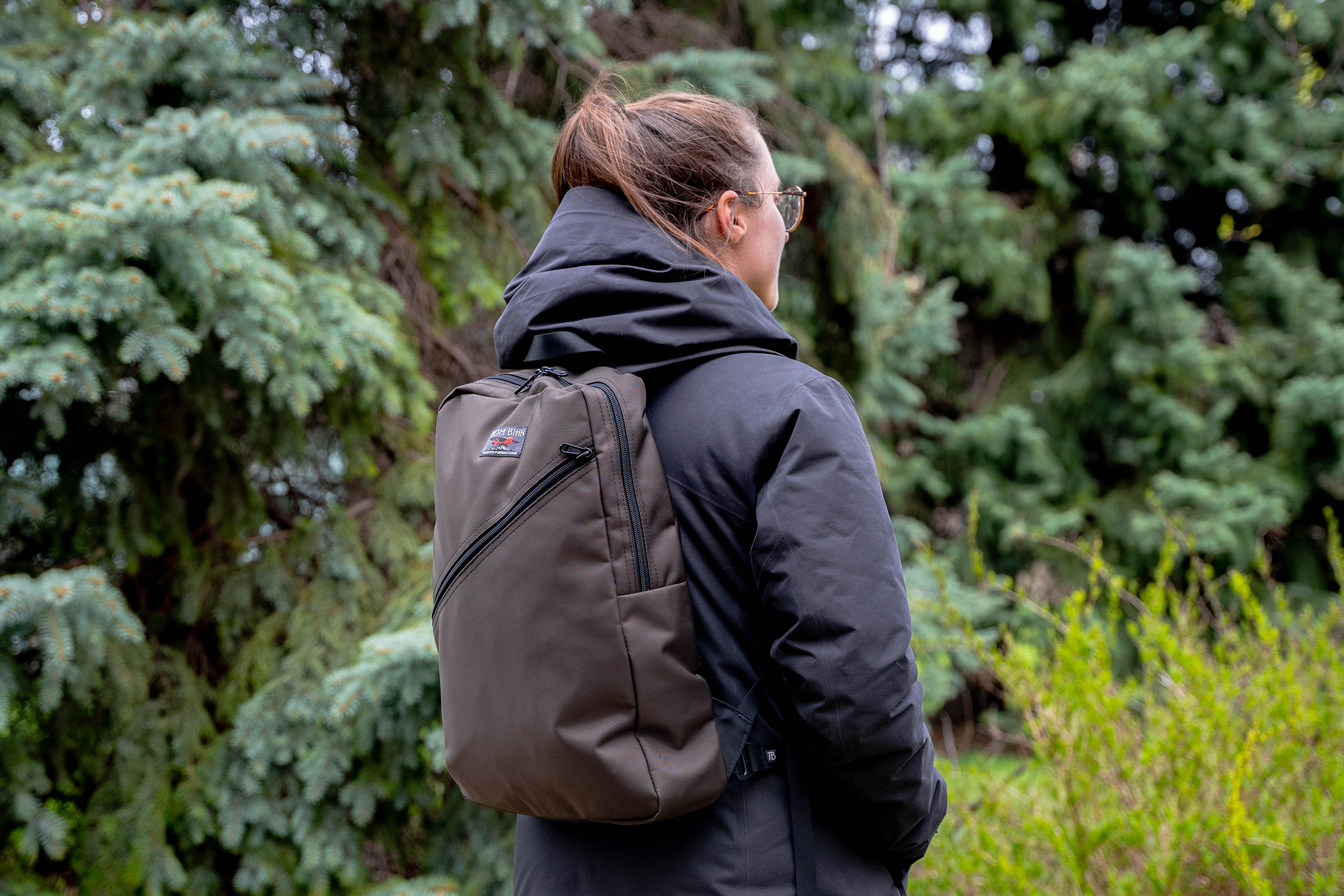
By and large, the Daylight does achieve its goal of being a lightweight daypack without sacrificing the level of quality we’ve come to expect from Tom Bihn. As a 16.5-liter daypack, we feel most of the heft comes from whatever we pack inside, with none coming from an excess amount of fabric, hardware, or any other unnecessary feature. Our main criticism lies with their replacement for the back panel, where we feel there’s room for improvement in terms of comfort—neat concept, some polish needed.
Usage Timeline
Condition: Excellent
- The shoulder straps make up for their lack of padding with their width
- Front pocket is fairly deep, but the diagonal opening helps with accessibility
- The layered interior pouches should be interesting to test if they help with carrying comfort
Condition: Excellent
- Fits a surprising amount of gear considering the slim profile
- Updated contour shoulder straps add just enough comfort without being overkill
- Spacious front compartment, though gear can stack up oddly since it shares a wall with the main compartment
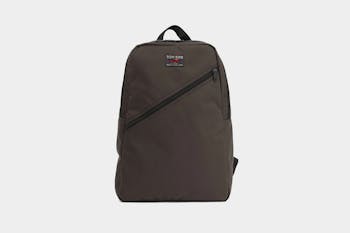
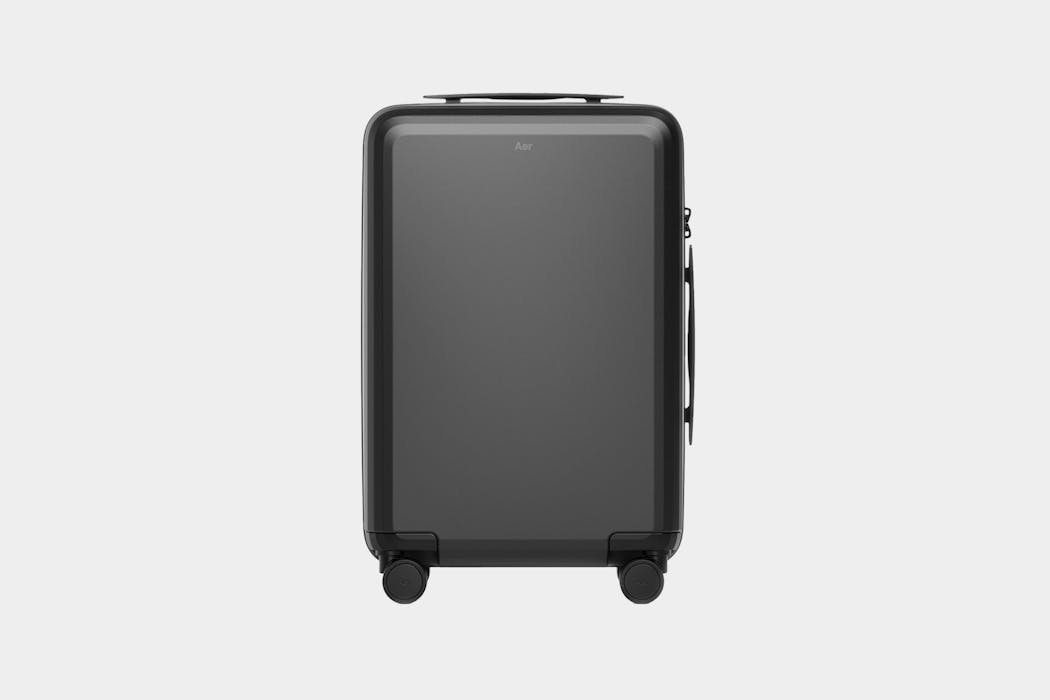
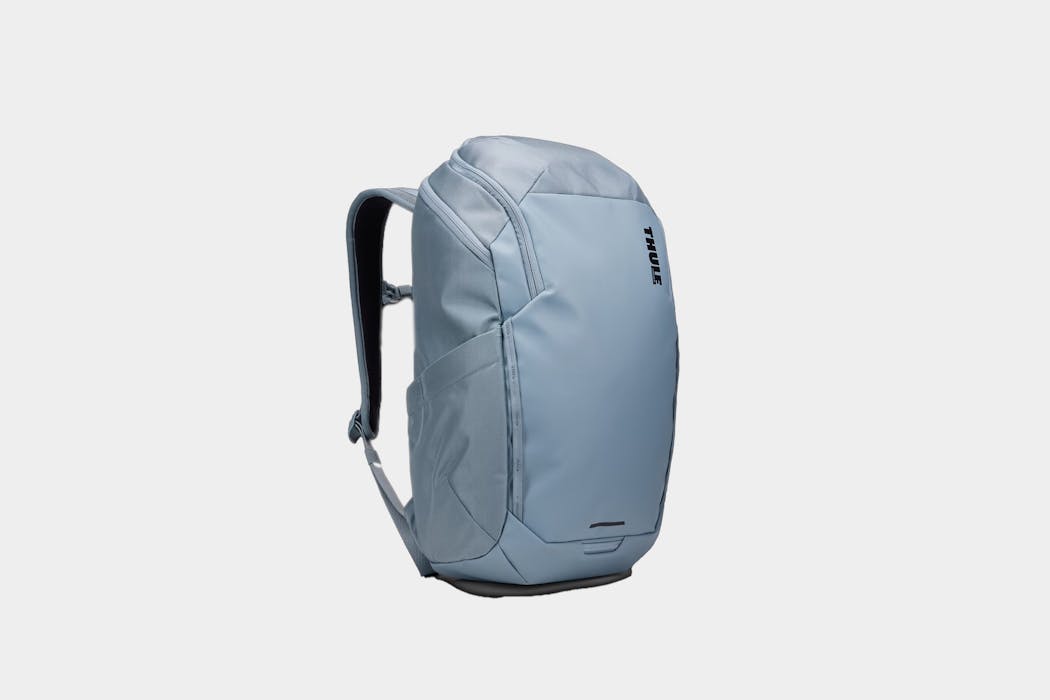
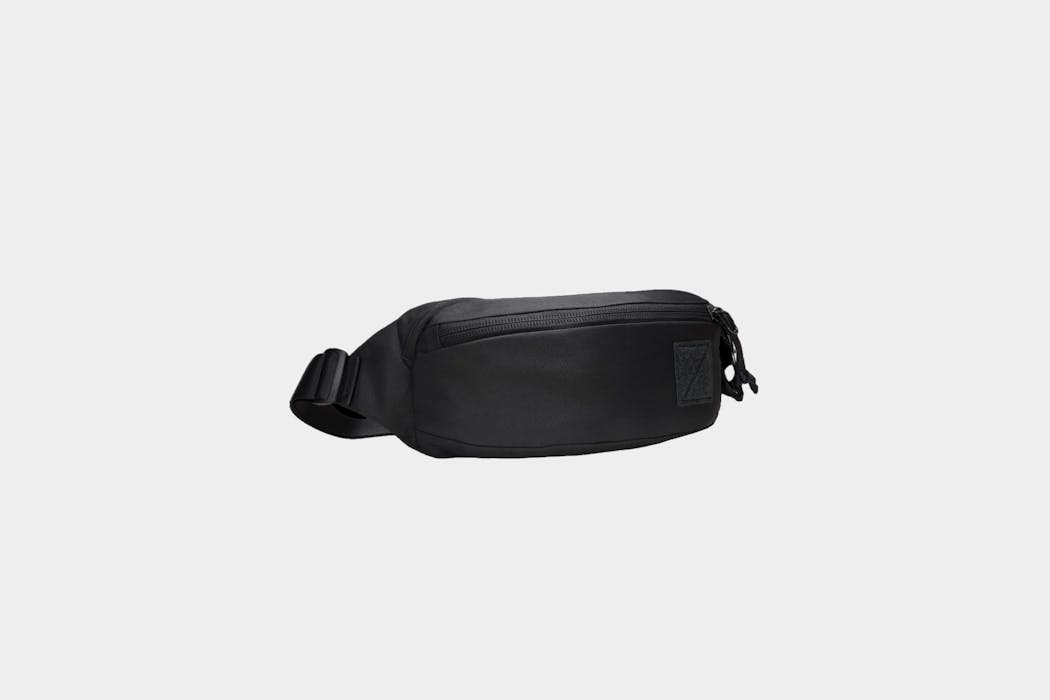

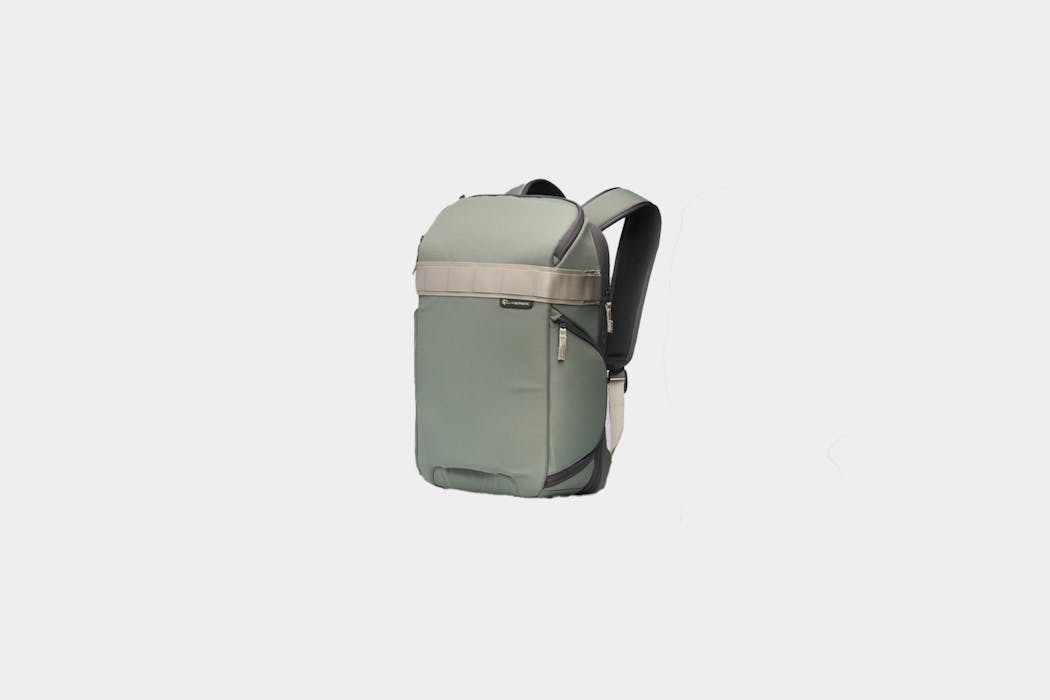
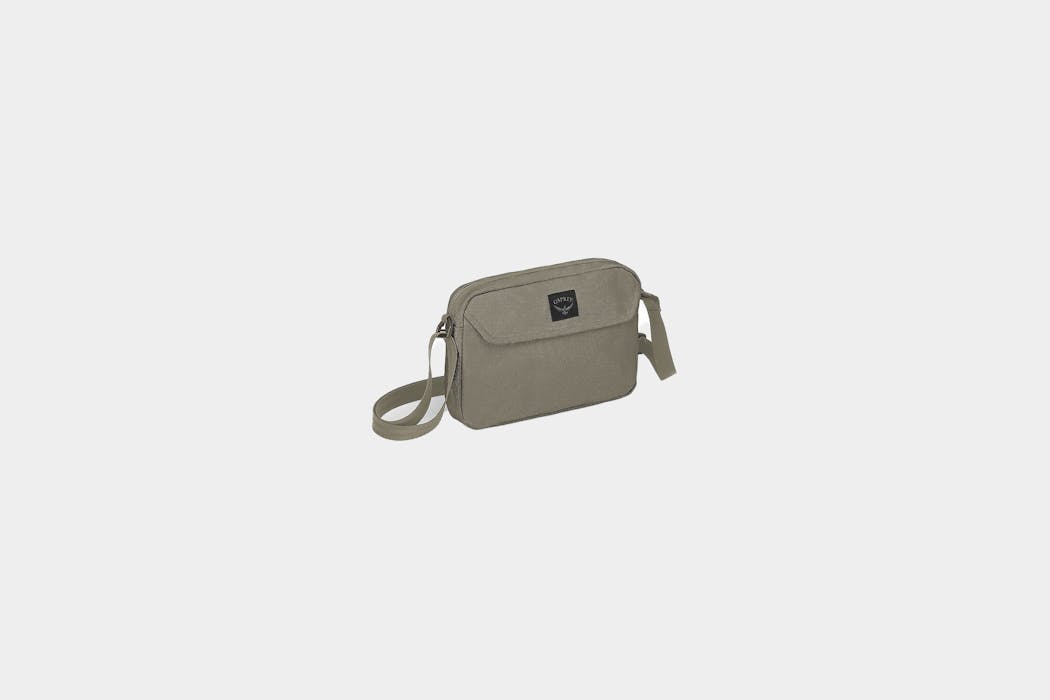
Get your questions about the TOM BIHN Daylight Backpack answered from our team and the Pro Community right here on the page. Plus, join discussions with other members about gear, guides, and more.
Join Pack Hacker Pro or, Sign In